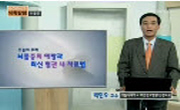The purpose of this study was to determine the effect of lower extremity strengthening program on balance, gait and upper limb function in patients with stroke. This study was a hospital-based with Central nerve system lesion patients, randomized cont...
http://chineseinput.net/에서 pinyin(병음)방식으로 중국어를 변환할 수 있습니다.
변환된 중국어를 복사하여 사용하시면 됩니다.
- 中文 을 입력하시려면 zhongwen을 입력하시고 space를누르시면됩니다.
- 北京 을 입력하시려면 beijing을 입력하시고 space를 누르시면 됩니다.

뇌졸중 환자에게 하지 근력강화 프로그램이 균형, 보행과 상지 기능에 미치는 효과 = The Effects of Lower Extremity Strengthening Program on Balance, Gait and Upper Limb Function in Patients with Stroke
한글로보기https://www.riss.kr/link?id=A106920248
- 저자
- 발행기관
- 학술지명
- 권호사항
-
발행연도
2020
-
작성언어
Korean
-
주제어
하지 ; 근력강화 프로그램 ; 균형 ; 상지 기능 ; 뇌졸중 ; Lower Extremity ; Strengthening Program ; Balance ; Upper Limb Function ; Stroke
-
등재정보
KCI등재
-
자료형태
학술저널
- 발행기관 URL
-
수록면
114-123(10쪽)
-
KCI 피인용횟수
0
- DOI식별코드
- 제공처
- 소장기관
-
0
상세조회 -
0
다운로드
부가정보
다국어 초록 (Multilingual Abstract)
The purpose of this study was to determine the effect of lower extremity strengthening program on balance, gait and upper limb function in patients with stroke. This study was a hospital-based with Central nerve system lesion patients, randomized controlled trial with a blinded assessor. Twenty four hemiparetic stroke patients were divided into two groups: a Lower extremity strengthening program group (LESPG)(n=12) and a Treadmill training group (TTG)(n=12). The LESPG performed a Lower extremity strengthening program on the affected side. The TTG exercised on a treadmill for 30 minutes a day. Assessment tools included the Timed Up and Go test (TUG), the Functional Gait Assessment (FGA) and the Manual Function Test (MFT). There was a significant difference in TUG, FGA, and MFT scores between the two groups in the LESPG for the balance, gait, and upper limb function than for the TTG(p<.01). Results of the present study indicated that the effect of lower extremity strengthening program for 4 weeks had an effect on balance, gait and upper limb function of hemiplegic patients after stroke.
국문 초록 (Abstract)
본 연구는 뇌졸중 환자에게 하지 근력강화 프로그램이 균형, 보행 및 상지 기능에 미치는 효과에 대해서 알아보았다. 신경계 손상 환자가 있는 병원을 기반으로 해서 하지 근력 강화에 대한 ...
본 연구는 뇌졸중 환자에게 하지 근력강화 프로그램이 균형, 보행 및 상지 기능에 미치는 효과에 대해서 알아보았다. 신경계 손상 환자가 있는 병원을 기반으로 해서 하지 근력 강화에 대한 연구 방법을 만들어서 진행하였고, 무작위대조시험을 적용하였다. 24명의 뇌졸중 환자를 두 군으로 분류하였다. 하지 근력 강화 프로그램그룹 (Lower extremity strengthening program group, LESPG) (12명)과 트레드밀 훈련그룹 (Treadmill trainig group, TTG) (12명)으로 실험하였다. LESPG는 마비측에 하지 근력 강화프로그램을 수행하였다. TTG는 하루 30분 동안 트레드밀 운동을 적용하였다. 평가 도구는 일어나서 보행 검사(Timed Up and Go test, TUG), 기능적 보행평가 (Functional Gait Assessment, FGA) 및 뇌졸중 상지 기능검사 (Manual Function Test, MFT)를 적용하였다. 균형, 보행 및 상지 기능에 대한 두 군 간의 TUG, FGA 및 MFT 점수는 LESPG가 TTG보다 유의한 차이가 있었다(p<.01). 4주간의 하지 근력강화 프로그램의 효과는 뇌졸중 후 편마비 환자의 균형, 보행 및 상지 기능에 효과가 있었다.
참고문헌 (Reference)
1 이수현, "트레드밀 운동 시 속도와 부하가 하지 근활성도와 근력에 미치는 영향" 대한물리치료과학회 26 (26): 37-43, 2019
2 박지원, "상지신경 가동기법이 뇌졸중 후 편마비 환자의 기능회복에 미치는 영향" 한국전문물리치료학회 8 (8): 29-38, 2001
3 김남재, "사슬운동 형태가 무릎관절 전치환술 후 대퇴사두근 근력과 하지 균형에 미치는 영향" 을지대학교 2016
4 송주영, "뇌졸중 환자의 상하지 복합운동 및 체중부하 운동이 입각기 특성에 미치는 영향" 한국장애인재활협회 부설 재활연구소 17 (17): 355-371, 2013
5 백진호, "뇌졸중 환자의 상지운동능력과 보행능력에 대한 상상연습의 효과" 한국자료분석학회 15 (15): 685-695, 2013
6 안승헌, "뇌졸중 환자의 균형과 기능 수행 및 보행 검사를 위한 평가도구의 비교 : BBS, TUG, Fugl-Meyer, MAS-G, C·MGS, MBI" 한국전문물리치료학회 14 (14): 64-71, 2007
7 정상미, "뇌졸중 환자의 균형 및 상지기능과 일상생활동작 수행능력과의 상관관계" 한국엔터테인먼트산업학회 7 (7): 224-229, 2013
8 박양선, "노인 하지근력 불균형에 따른 보행과 계단 내리기 보행의 변인 분석" 한국발육발달학회 20 (20): 127-132, 2012
9 박지응, "기능적 훈련 시스템을 이용한 조절된 자세에서의 트레드밀 보행훈련이 만성 뇌졸중 환자의 보행 기능과 균형에 미치는 효과" 대한물리의학회 12 (12): 35-42, 2017
10 허명, "기능적 상지운동과제가 뇌졸중 입원환자의 상지기능과 일상생활활동에 미치는 영향" 한국엔터테인먼트산업학회 7 (7): 131-136, 2013
1 이수현, "트레드밀 운동 시 속도와 부하가 하지 근활성도와 근력에 미치는 영향" 대한물리치료과학회 26 (26): 37-43, 2019
2 박지원, "상지신경 가동기법이 뇌졸중 후 편마비 환자의 기능회복에 미치는 영향" 한국전문물리치료학회 8 (8): 29-38, 2001
3 김남재, "사슬운동 형태가 무릎관절 전치환술 후 대퇴사두근 근력과 하지 균형에 미치는 영향" 을지대학교 2016
4 송주영, "뇌졸중 환자의 상하지 복합운동 및 체중부하 운동이 입각기 특성에 미치는 영향" 한국장애인재활협회 부설 재활연구소 17 (17): 355-371, 2013
5 백진호, "뇌졸중 환자의 상지운동능력과 보행능력에 대한 상상연습의 효과" 한국자료분석학회 15 (15): 685-695, 2013
6 안승헌, "뇌졸중 환자의 균형과 기능 수행 및 보행 검사를 위한 평가도구의 비교 : BBS, TUG, Fugl-Meyer, MAS-G, C·MGS, MBI" 한국전문물리치료학회 14 (14): 64-71, 2007
7 정상미, "뇌졸중 환자의 균형 및 상지기능과 일상생활동작 수행능력과의 상관관계" 한국엔터테인먼트산업학회 7 (7): 224-229, 2013
8 박양선, "노인 하지근력 불균형에 따른 보행과 계단 내리기 보행의 변인 분석" 한국발육발달학회 20 (20): 127-132, 2012
9 박지응, "기능적 훈련 시스템을 이용한 조절된 자세에서의 트레드밀 보행훈련이 만성 뇌졸중 환자의 보행 기능과 균형에 미치는 효과" 대한물리의학회 12 (12): 35-42, 2017
10 허명, "기능적 상지운동과제가 뇌졸중 입원환자의 상지기능과 일상생활활동에 미치는 영향" 한국엔터테인먼트산업학회 7 (7): 131-136, 2013
11 정재훈, "과제 지향적 상지 운동이 뇌졸중 환자의 상지 기능과 일상생활활동에 미치는 영향" 한국장애인재활협회 부설 재활연구소 15 (15): 231-253, 2011
12 장상훈, "고유수용성감각운동이 성인의 균형능력에 미치는 효과" 24 (24): 36-44, 2017
13 노정석, "가상현실기반 재활프로그램이 뇌졸중환자의 균형에 미치는 영향 : 국내연구에 대한 메타분석" 24 (24): 59-68, 2017
14 C. L. Hsieh, "Trunk control as an early predictor of comprehensive activities of daily living function in stroke patients" 33 (33): 2626-2630, 2002
15 A. M. Jette, "Toward a common language for function, disability, and health" 86 (86): 726-734, 2006
16 P. Y. Lin, "The relation between ankle impairments and gait velocity and symmetry in people with stroke" 87 (87): 562-566, 2006
17 Y. Y. You, "The effects of stretching and stabilization exercise on the improvement of spastic shoulder function in hemiplegic patients" 26 (26): 491-495, 2014
18 J. O. Yang, "The effects of active scapular protraction on the muscle activation and function of the upper extremity" 26 (26): 599-603, 2014
19 S. Horstmann, "Sonographic monitoring of mass effect in stroke patients treated with hypothermia. Correlation with intracranial pressure and matrix metalloproteinase 2 and 9 expression" 276 (276): 75-78, 2009
20 D. D. Hardwick, "Scapular and humeral movement patterns of people with stroke during range-of-motion exercises" 35 (35): 18-25, 2011
21 R. L. Cromwell, "Sagittal plane analysis of head, neck, and trunk kinematics and electromyographic activity during locomotion" 31 (31): 255-262, 2001
22 S. Miyamoto, "Reliability and validity of the Manual Function Test in patients with stroke" 88 (88): 247-255, 2009
23 K. N. Fong, "Relationship of motor and cognitive abilities to functional performance in stroke rehabilitation" 15 (15): 443-453, 2001
24 C. Woodson, "Relationship of isokinetic peak torque with work and power for ankle plantar flexion and dorsiflexion" 87 : 113-115, 1995
25 C. K. Balasubramanian, "Relationship between step length asymmetry and walking performance in subjects with chronic hemiparesis" 88 (88): 43-49, 2015
26 D. Pradon, "Relationship between lower limb muscle strength and 6-minute walk test performance in stroke patients" 45 (45): 105-108, 2013
27 C. Luke, "Outcomes of the Bobath concept on upper limb recovery following stroke" 18 (18): 888-898, 2004
28 T. R. Hill, "Maximal strength training enhances strength and functional performance in chronic stroke survivors" 91 (91): 393-400, 2012
29 L. A. Leddy, "Functional gait assessment and balance evaluation system test : reliability, validity, sensitivity, and specificity for identifying individuals with Parkinson disease who fall" 91 (91): 102-113, 2011
30 H. J. Hong, "Effects of bimanual intensive training on upper extremity function in stroke" The Graduate School Yonsei University 2016
31 김보슬, "Effects of Pressure Sense Perception Training on Unstable Surface on Somatosensory, Balance and Gait Function in Patients with Stroke" 대한물리의학회 10 (10): 237-245, 2015
32 공해나, "Effects of Balance Training on Different Support Surface on Balance and Gait in Patients with Chronic Stroke" 대한물리의학회 10 (10): 275-283, 2015
33 K. Kawanabe, "Effect of whole-body vibration exercise and muscle strengthening, balance, and walking exercises on walking ability in the elderly" 56 (56): 28-33, 2007
34 A. Awad, "Effect of shoulder girdle strengthening on trunk alignment in patients with stroke" 27 (27): 2195-2200, 2015
35 C. A. Trombly, "Effect of rehabilitation tasks on organization of movement after stroke" 53 (53): 333-344, 1999
36 L. Allet, "Effect of different walking aids on walking capacity of patients with poststroke hemiparesis" 90 (90): 1408-1413, 2009
37 H. J. Jeon, "Effect of bilateral lower limb strengthening exercise on balance and walking in hemiparetic patients after stroke : a randomized controlled trial" 30 (30): 277-281, 2018
38 M. MacKay-Lyons, "Central pattern generation of locomotion : a review of the evidence" 81 (81): 69-83, 2002
39 J. F. Bayouk, "Balance training following stroke : effects of task-oriented exercises with and without altered sensory input" 29 (29): 51-59, 2006
40 A. L. Hsu, "Analysis of impairments influencing gait velocity and asymmetry of hemiplegic patients after mild to moderate stroke" 84 (84): 1185-1193, 2003
동일학술지(권/호) 다른 논문
-
아동학대에서 발생하는 언어폭력에 영향을 미치는 심리사회적 요인에 관한 연구
- 한국콘텐츠학회
- 김진영
- 2020
- KCI등재
-
청년의 여가시간과 교제시간에 대한 영향요인 탐색 -청년 역할유형의 영향을 중심으로-
- 한국콘텐츠학회
- 정은희
- 2020
- KCI등재
-
- 한국콘텐츠학회
- 전성해
- 2020
- KCI등재
-
아동의 통증 감소를 위한 VR 콘텐츠 활성화 방안 연구 - 국내 ·외 VR 콘텐츠의 사례 연구를 중심으로
- 한국콘텐츠학회
- 김호다
- 2020
- KCI등재
분석정보
인용정보 인용지수 설명보기
학술지 이력
| 연월일 | 이력구분 | 이력상세 | 등재구분 |
|---|---|---|---|
| 2027 | 평가예정 | 재인증평가 신청대상 (재인증) | |
| 2021-01-01 | 평가 | 등재학술지 유지 (재인증) |  |
| 2018-01-01 | 평가 | 등재학술지 유지 (등재유지) |  |
| 2015-01-01 | 평가 | 등재학술지 유지 (등재유지) |  |
| 2011-01-01 | 평가 | 등재학술지 유지 (등재유지) |  |
| 2008-01-01 | 평가 | 등재학술지 선정 (등재후보2차) |  |
| 2007-05-04 | 학회명변경 | 영문명 : The Korea Contents Society -> The Korea Contents Association |  |
| 2007-01-01 | 평가 | 등재후보 1차 PASS (등재후보1차) |  |
| 2006-01-01 | 평가 | 등재후보학술지 유지 (등재후보1차) |  |
| 2004-01-01 | 평가 | 등재후보학술지 선정 (신규평가) |  |
학술지 인용정보
| 기준연도 | WOS-KCI 통합IF(2년) | KCIF(2년) | KCIF(3년) |
|---|---|---|---|
| 2016 | 1.21 | 1.21 | 1.26 |
| KCIF(4년) | KCIF(5년) | 중심성지수(3년) | 즉시성지수 |
| 1.29 | 1.25 | 1.573 | 0.33 |




 ScienceON
ScienceON DBpia
DBpia







